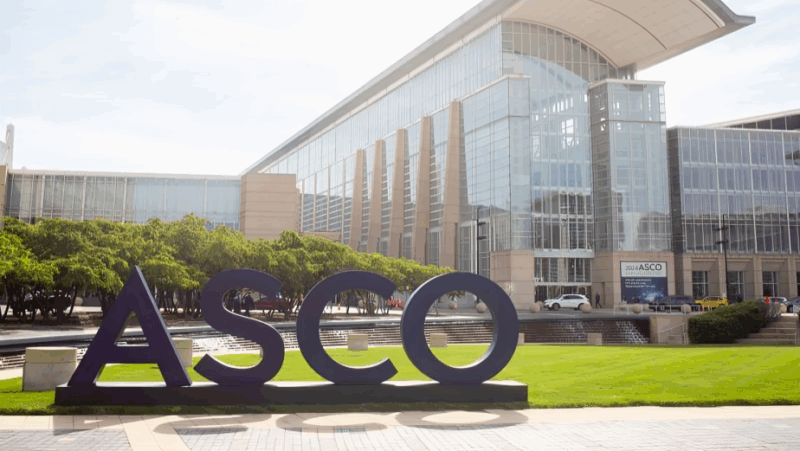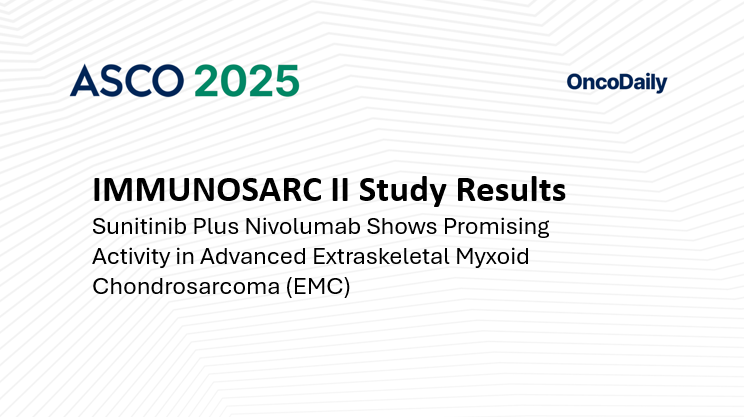The IMMUNOSARC I master trial showed signs of efficacy for sunitinib plus nivolumab in EMC patients, prompting a dedicated EMC cohort in the phase II IMMUNOSARC II trial (NCT03277924). Extraskeletal myxoid chondrosarcoma (EMC) is an ultra-rare sarcoma subtype with limited sensitivity to conventional chemotherapy. Previous studies demonstrated activity of antiangiogenic agents such as pazopanib in advanced EMC.
Study Design and Patients
Adult patients with advanced, progressing, measurable, and centrally confirmed EMC were enrolled. Treatment involved sunitinib 37.5 mg daily for the first 14 days of each cycle, followed by 25 mg daily, combined with nivolumab 240 mg every two weeks until progression or intolerance. Imaging assessments were conducted every 8 weeks. The primary endpoint was the 6-month progression-free survival rate (6m-PFSR), with the trial designed to consider the combination promising if ≥15 of 22 patients were progression-free at 6 months.
IMMUNOSARC II Study Key Results
From May 2020 to July 2024, 24 patients were enrolled across 9 centers in Spain, Italy, and the UK. Median age was 58 years (range 42–83), with a male predominance (19 males, 5 females). Thirteen patients (54%) were treatment-naïve, and 22 (92%) had metastatic disease at baseline.
- Safety: Grade 3–4 adverse events occurring in >5% of patients included hypertension (29.2%), ALT increase (16.7%), AST increase (12.5%), bilirubin increase (12.5%), and lymphocytopenia (12.5%). One patient experienced grade 4 leukopenia; no other grade 4 hematologic events were reported.
- Efficacy: Among 23 evaluable patients, with median follow-up of 18 months (range 8–29):
- 6m-PFSR was 77%, with 16 patients progression-free at 6 months.
- Median progression-free survival was 13.2 months (95% CI 5.7–20.7).
- Median overall survival was not reached; 12-month OS was 90% (95% CI 77–100).
- Best responses included 2 partial responses (9%), 18 stable disease (82%), and 2 progressions (9%).
Patients previously treated with antiangiogenics showed a trend toward shorter median PFS (7 vs. 13 months, p=0.11) and significantly shorter OS (28 months vs. not reached, p=0.038).
Conclusions
The combination of sunitinib and nivolumab demonstrates promising anti-tumor activity and manageable safety in advanced extraskeletal myxoid chondrosarcoma. Data suggest greater benefit when used in earlier treatment lines. Further investigation is warranted to confirm these findings and optimize treatment strategies.
You Can Also Read SOHO-01 Trial Results: BAY 2927088 Shows Promising Activity in Advanced HER2-Mutant NSCLC at ASCO 2025 by Oncodaily
Authors
Nadia Hindi, Emanuela Palmerini, Irene Carrasco-Garcia, Enrique Gonzalezbilla, Claudia M. Valverde Morales, Sandra J. Strauss, Toni Ibrahim, Ana Sebio, Robert Díaz-Beveridge, Javier Martínez-Trufero, Silvia Stacchiotti, Paola Collini, Roberto Tirabosco, Rafael Ramos, Antonio Gutierrez, David S. Moura, Javier Martin Broto
Affiliations
Fundación Jimenez Diaz University Hospital, Madrid, Spain; University Hospital General de Villalba, Madrid, Spain; Instituto de Investigacion Sanitaria Fundacion Jimenez Diaz (IIS/FJD; UAM), Madrid, Spain; IRCCS Istituto Ortopedico Rizzoli, Bologna, Italy; Hospital Universitario Virgen del Rocio, Seville, Spain; Hospital Universitario 12 de Octubre, Madrid, Spain; Vall d’Hebron University Hospital, Barcelona, Spain; University College of London, London, United Kingdom; Hospital de la Santa Creu i Sant Pau, Barcelona, Spain;
Hospital Universitario y Politécnico La Fe, Valencia, Spain; Instituto Aragonés de Investigación Sanitaria, Hospital Universitario Miguel Servet, Zaragoza, Spain; Fondazione IRCCS Istituto Nazionale dei Tumori, Milan, Italy; Royal National Orthopaedic Hospital, Stanmore, United Kingdom; University Hospital Son Espases, Mallorca, Spain; Health Research Institute-Fundación Jiménez Díaz University Hospital, Autonomous University of Madrid (IIS-FJD, UAM), Madrid, Spain.

How Common Is Extraskeletal Myxoid Chondrosarcoma?
Extraskeletal myxoid chondrosarcoma (EMC) is a rare soft tissue sarcoma, accounting for less than 3% of all soft tissue sarcomas. It typically occurs in adults around 50 years old, with a male-to-female ratio of approximately 2:1. EMC most commonly arises in the deep soft tissues of the lower extremities, especially the thigh (about 30–40% of cases). About 13% of patients present with metastases at diagnosis, and overall, 34% develop metastatic disease during follow-up, with the lungs being the primary site in 80% of metastatic cases.
The disease has a relatively indolent course but shows a high rate of local recurrence (up to 37%) and distant relapse (around 26%). Long-term survival rates are moderate, with 5-year overall survival around 82%, decreasing to about 58% at 15 years. Despite its slow growth, metastatic EMC is associated with poor prognosis, with median survival after metastasis of approximately 1.7 years
You Can Also Watch Immunotherapy in Sarcoma | Sarcoma Talk #11 with Javier Martin Broto by Oncodaily
Written by Aharon Tsaturyan MD
